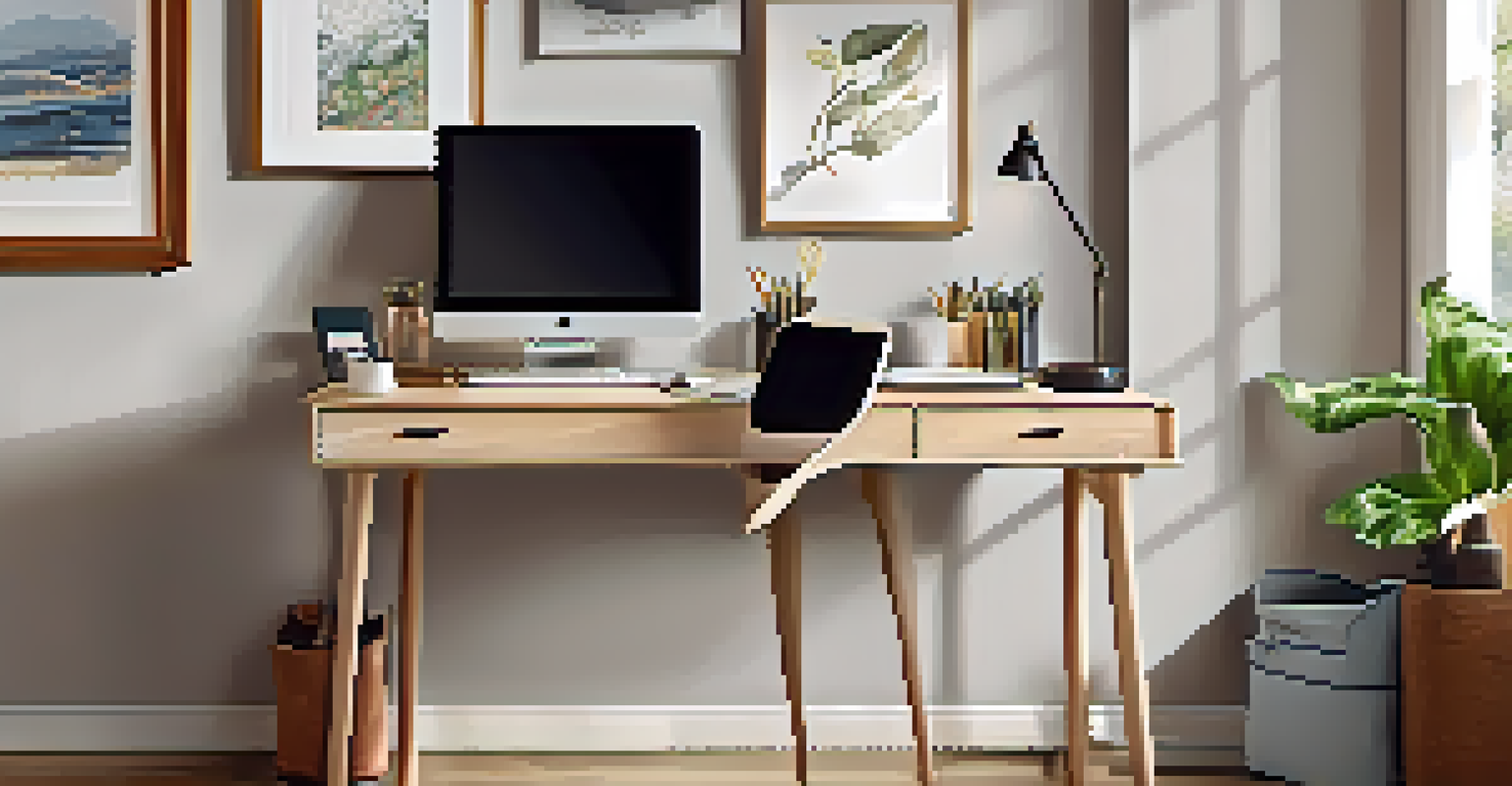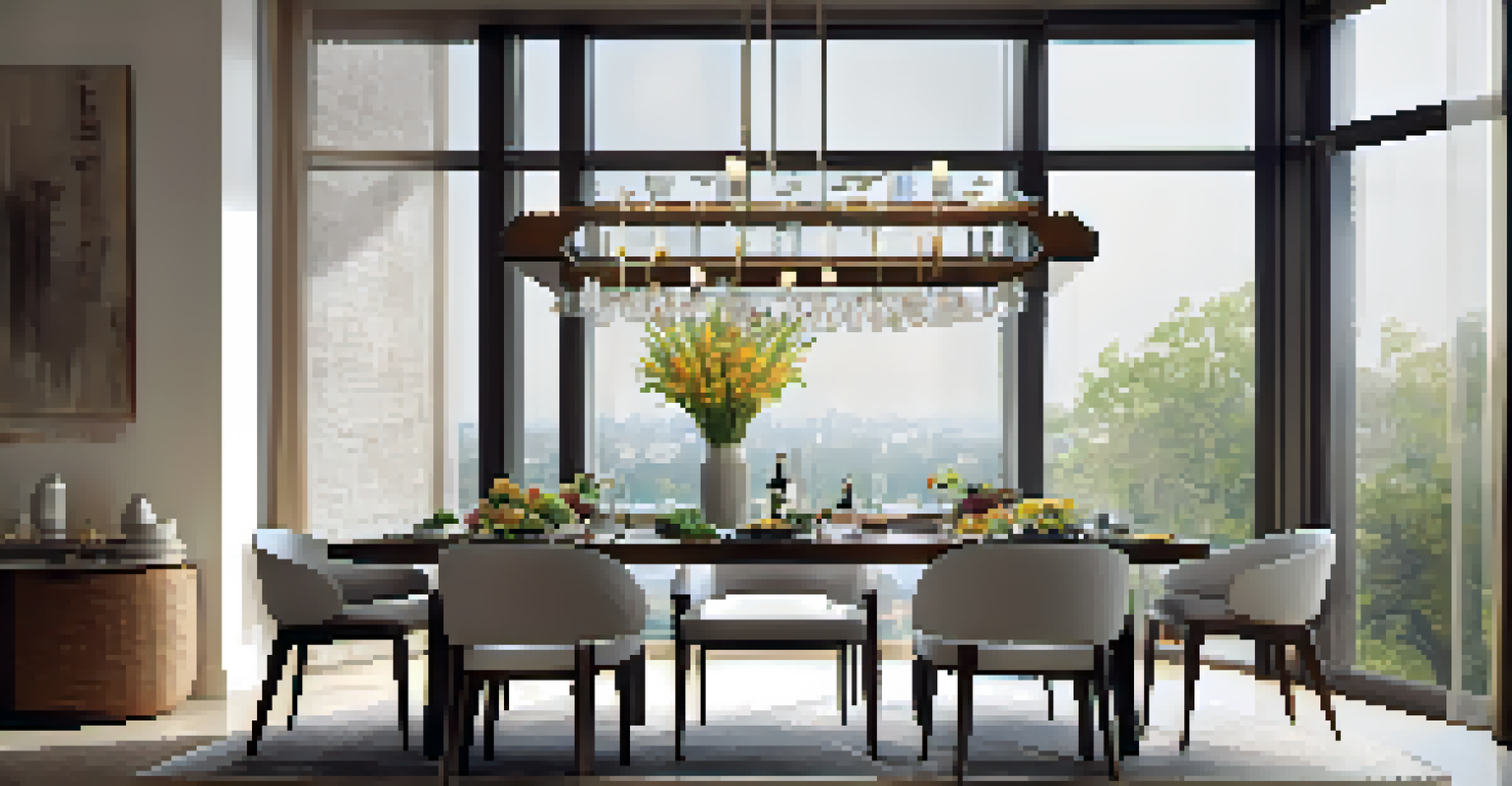Importance of Adjustable Furniture in Accessible Homes

Understanding Adjustable Furniture and Its Benefits
Adjustable furniture refers to pieces that can be modified in height, width, or configuration to meet individual needs. This flexibility is crucial for creating spaces that accommodate various body types and mobility challenges. By allowing users to customize their furniture, it promotes comfort and usability, which are essential in any home environment.
Design is not just what it looks like and feels like. Design is how it works.
Imagine a table that can be raised for dining or lowered for a child's art project. This adaptability not only enhances functionality but also encourages independence. Individuals are empowered to engage with their living spaces without relying on assistance, making daily tasks feel less daunting.
Moreover, adjustable furniture can support a range of activities, from working at a desk to relaxing in a living room. This versatility makes it an excellent investment for families, as it can evolve alongside changing needs over time. Ultimately, adjustable furniture can transform a house into a truly accessible home.
Creating Inclusive Living Spaces with Adjustable Designs
Incorporating adjustable furniture into home design is a step towards inclusivity. It ensures that everyone, regardless of physical ability, can enjoy a comfortable and functional living space. This approach not only supports those with disabilities but also benefits aging family members who may face mobility challenges.

For instance, an adjustable bed can cater to different sleeping positions and ease the strain on joints, providing a better night's rest. Similarly, height-adjustable desks can accommodate both seated and standing work preferences, promoting better posture and health.
Adjustable Furniture Promotes Inclusivity
Incorporating adjustable furniture ensures that everyone, regardless of physical ability, can enjoy a comfortable and functional living space.
By prioritizing adjustable designs, homeowners can create environments that foster connection and independence. This inclusivity encourages family members to engage in shared activities, ultimately strengthening bonds and enhancing quality of life.
Enhancing Safety with Adjustable Furniture Features
Safety is a primary concern in accessible homes, and adjustable furniture can play a significant role in mitigating risks. For example, adjustable chairs can be modified to ensure proper support, reducing the likelihood of falls. This is particularly important for elderly individuals or those recovering from injuries.
The greatest glory in living lies not in never falling, but in rising every time we fall.
Consider a scenario where a person with limited mobility uses an adjustable shower seat. This feature allows them to maintain balance and control while bathing, significantly reducing the risk of slips and falls. Such thoughtful design choices make daily routines safer and more manageable.
In addition, adjustable furniture often comes with features like locking mechanisms or non-slip surfaces, further enhancing safety. By focusing on these elements, homeowners can create environments that prioritize health and well-being.
The Role of Adjustable Furniture in Promoting Independence
One of the most significant advantages of adjustable furniture is the independence it fosters. When individuals can modify their furniture to suit their needs, they can manage daily activities without assistance. This sense of autonomy is empowering and can improve overall mental health.
Think about a person who uses a wheelchair. An adjustable table can be raised or lowered, allowing them to participate in family meals or hobbies without feeling restricted. This empowerment leads to increased confidence and a more fulfilling life.
Safety Benefits of Adjustable Designs
Adjustable furniture features, like modified chairs and shower seats, significantly enhance safety and reduce the risk of falls.
Moreover, independence can have a ripple effect on relationships. When individuals feel capable of handling their needs, they may be more likely to engage with family and friends, creating a stronger support network.
Cost-Effectiveness of Investing in Adjustable Furniture
Investing in adjustable furniture may seem like a significant expense upfront, but it can be cost-effective in the long run. By providing versatility, these pieces can adapt to changing needs over time, reducing the need for frequent replacements. This durability is particularly beneficial for families with growing children or aging parents.
For example, a height-adjustable desk can be used by multiple family members, accommodating various tasks and preferences. This shared use maximizes value and minimizes waste, aligning with sustainable living practices.
Additionally, many adjustable furniture options come with warranties or guarantees, further protecting your investment. By considering the long-term benefits, homeowners can see that adjustable furniture is not just a purchase but a smart financial decision.
Adjustable Furniture: Aesthetic Versatility in Home Design
Adjustable furniture is not only functional but can also be stylish. With a variety of designs and finishes available, homeowners can find pieces that fit seamlessly into their existing décor. This aesthetic versatility allows for a beautiful yet practical living environment.
Imagine a sleek, modern adjustable sofa that complements contemporary interiors while providing comfort and support. Homeowners can achieve a cohesive look without sacrificing functionality, making it easier to create inviting spaces.
Cost-Effective Long-Term Investment
While adjustable furniture may seem costly initially, its versatility and durability make it a smart financial decision over time.
Furthermore, many manufacturers are now focusing on design trends, ensuring that adjustable furniture meets both practical and visual demands. This means that accessibility doesn't have to compromise style, allowing homeowners to express their unique tastes.
Future Trends in Adjustable Furniture and Accessibility
As the demand for accessible living spaces grows, the future of adjustable furniture looks promising. Innovations in materials and technology are leading to smarter designs that can cater to specific needs more effectively. For instance, we may soon see furniture that can be controlled via smartphone apps, allowing users to adjust settings effortlessly.
Additionally, the rise of sustainable materials in furniture design means that adjustable pieces can be both eco-friendly and durable. Consumers are becoming increasingly aware of their environmental impact, and manufacturers are responding with innovative solutions.

Overall, these trends highlight a shift towards greater accessibility and sustainability in home design. As we move forward, adjustable furniture will continue to play a vital role in creating inclusive and adaptable living spaces for all.